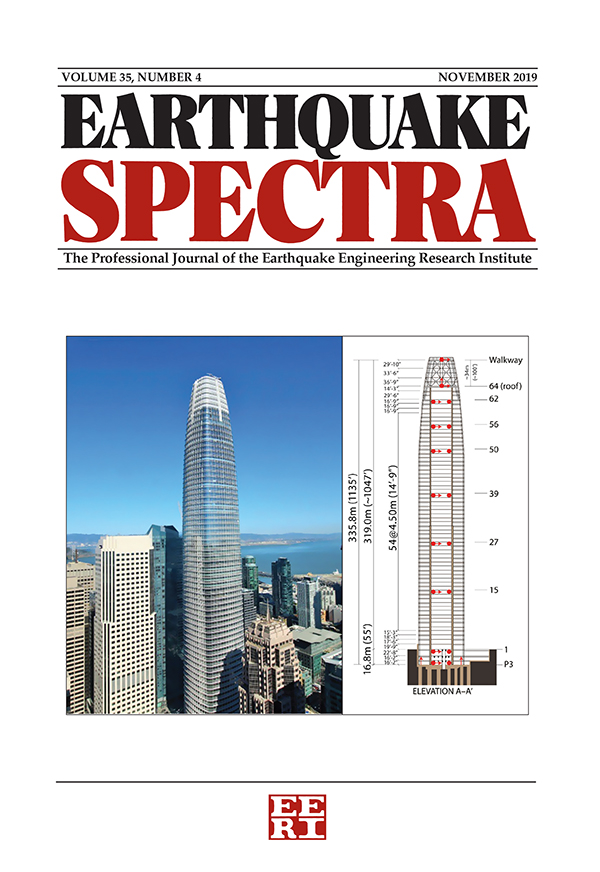The 2023 Alaska National Seismic Hazard Model
IF 3.7
2区 工程技术
Q2 ENGINEERING, CIVIL
引用次数: 0
Abstract
US Geological Survey (USGS) National Seismic Hazard Models (NSHMs) are used extensively for seismic design regulations in the United States and earthquake scenario development, as well as risk assessment and mitigation for both buildings and infrastructure. This 2023 update of the long-term, time-independent Alaska NSHM includes substantial changes to both the earthquake rupture forecast (ERF) and ground motion models (GMMs). The ERF includes numerous additions to the finite-fault model, considers two deformation models, and introduces updated declustering and smoothing algorithms in the gridded background seismicity model. For the Alaska–Aleutian subduction zone, megathrust earthquakes occur on an updated structural and segmentation model, and the moment magnitude (M) 8+ rupture and rate model include a logic tree branch that considers slip rates derived from geodetic models of interface coupling. The megathrust model considers multiple models of down-dip width, and magnitudes are computed using newly developed scaling relations. For subduction intraslab events and subduction interface events with M < 7, the 2023 update uses a smoothed seismicity model with rupture depths derived from Slab2. The 2023 model updates GMMs in all tectonic settings using the recently published Next Generation Attenuation Subduction (NGA-Sub) GMMs for subduction interface and intraslab events, and the NGA-West2 GMMs for active crustal settings. Collectively, additions and updates to the Alaska NSHM result in hazard increases across most of south-central Alaska relative to the previous model, published in 2007. These changes are primarily due to the adoption of updated rate models for the large-magnitude interface events and the NGA-Sub GMMs that have much higher aleatory variability (sigma), consistent with global observations, and that include models of epistemic uncertainty.2023 年阿拉斯加国家地震灾害模型
美国地质调查局(USGS)的国家地震危险模型(NSHM)被广泛用于美国的地震设计法规和地震场景开发,以及建筑物和基础设施的风险评估和减灾。与时间无关的长期阿拉斯加国家地震危险性模型的 2023 年更新包括对地震破裂预测 (ERF) 和地面运动模型 (GMM) 的重大更改。地震破裂预测(ERF)包括对有限断层模型的大量补充,考虑了两种变形模型,并在网格背景地震模型中引入了更新的去聚类和平滑算法。对于阿拉斯加-阿留申俯冲带,巨推地震发生在更新的结构和分段模型中,矩震级 (M) 8+ 破裂和速率模型包括一个逻辑树分支,该分支考虑了从界面耦合大地测量模型中得出的滑动速率。巨推模型考虑了多种下倾宽度模型,并使用新开发的比例关系计算震级。对于 M < 7 的俯冲板内事件和俯冲界面事件,2023 年更新版使用了平滑地震模型,其破裂深度来自 Slab2。2023 年模式更新了所有构造背景下的 GMMs,针对俯冲界面和台内事件使用了最近发布的下一代衰减俯冲(NGA-Sub)GMMs,针对活动地壳背景使用了 NGA-West2 GMMs。总体而言,与 2007 年发布的前一模型相比,阿拉斯加 NSHM 的增加和更新导致阿拉斯加中南部大部分地区的灾害增加。这些变化主要是由于采用了更新的大震级界面事件速率模型和 NGA-Sub GMMs,这些模型具有与全球观测结果一致的更高的 aleatory variability (sigma),并包含了认识不确定性模型。
本文章由计算机程序翻译,如有差异,请以英文原文为准。
求助全文
约1分钟内获得全文
求助全文
来源期刊

Earthquake Spectra
工程技术-工程:地质
CiteScore
8.40
自引率
12.00%
发文量
88
审稿时长
6-12 weeks
期刊介绍:
Earthquake Spectra, the professional peer-reviewed journal of the Earthquake Engineering Research Institute (EERI), serves as the publication of record for the development of earthquake engineering practice, earthquake codes and regulations, earthquake public policy, and earthquake investigation reports. The journal is published quarterly in both printed and online editions in February, May, August, and November, with additional special edition issues.
EERI established Earthquake Spectra with the purpose of improving the practice of earthquake hazards mitigation, preparedness, and recovery — serving the informational needs of the diverse professionals engaged in earthquake risk reduction: civil, geotechnical, mechanical, and structural engineers; geologists, seismologists, and other earth scientists; architects and city planners; public officials; social scientists; and researchers.
 求助内容:
求助内容: 应助结果提醒方式:
应助结果提醒方式:


